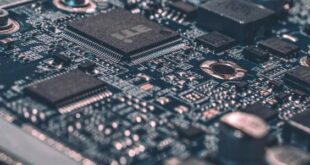Mitsubishi Shipbuilding Co. Ltd. has entered a deal for technical studies on technologies that would enable ammonia to be used to power vessels.
The agreement with Winterthur Gas & Diesel AG (WinGD) will test the gas commonly used for fertilizers on “large, low-speed two-stroke marine engines” currently being developed by the Swiss company, Mitsubishi Heavy Industries Group (MHI) said in a press release Monday. The memorandum of understanding (MOU) was signed June 2.
“The newly concluded MOU reflects both companies’ desire to contribute to the achievement of the International Maritime Organization’s (IMO) decarbonization target in the maritime industry’s greenhouse gas (GHG) emissions”, MHI, Mitsubishi Shipbuilding’s parent, said.
The engine model WinGD is developing, called X-DF-A, is designed to run on ammonia. “Mitsubishi Shipbuilding will now work with WinGD in studying the technologies for developing and commercializing the ammonia fuel supply system for the X-DF-A engines”, the announcement stated.
“Ammonia, which emits no CO2 when combusted, is garnering attention today as a fuel that contributes significantly to the reduction of GHG emissions in the maritime industry, and it is expected to be utilized as a stable, clean energy in the future”, MHI said.
The IMO has pledged to cut 50 percent of total annual GHG emissions in the shipping sector by 2050 relative to 2008 levels, which its “Greenhouse Gas Study 2020” estimated to be 794 million metric tons of carbon dioxide (CO2) equivalent. The report for 2020, the latest edition, said shipping accounted for 2.89 percent of human-caused emissions 2018, when the sector emitted 1.076 billion metric tons of GHGs.
The Tokyo-based MHI has pledged to achieve net zero CO2 emissions by 2040 with a near-term target reduction by half come 2030 relative to 2019 levels. “These targets include the reduction in emissions attributed to our customers’ use of our products and services, and the reduction contribution from MHI’s Carbon dioxide Capture, Utilization and Storage (CCUS) business”, it said in a media statement October 29, 2021.
“A key objective will be to help customers to bend the cost curve of their energy transition with affordable and reliable solutions, as we help to realize a sustainable society”, the MHI said in that statement.
It targets to reduce CO2 released directly from its operations by half by 2030 relative to 2014 levels. “MHI Group will work on decarbonizing its factories by implementing the technologies it has developed in its own facilities and further advancing energy conservation”, the commitment statement said.
The International Energy Agency (IEA) sees a 37 percent growth in ammonia production to 253 million metric tons by 2050 relative to current levels with the assumption that producers set steps to become net zero by 2050, according to the agency’s roadmap for sustainable nitrogen fertilizer production published October 2021.
Around 70 percent of ammonia currently produced is used for fertilizers, according to the IEA in that report.
“While the use of ammonia as a fuel shows promise in the context of clean energy transitions, this application currently remains nascent”, the IEA said.
Tags Mitsubishi Rigzone
Check Also
Tanker Fleet Crunch Forecasts Strong Rates through Early 2026
Oil tanker rates are set to stay elevated in early 2026 as crude supply is …
 Iran Energy News Oil, Gas, Petrochemical and Energy Field Specialized Channel
Iran Energy News Oil, Gas, Petrochemical and Energy Field Specialized Channel



